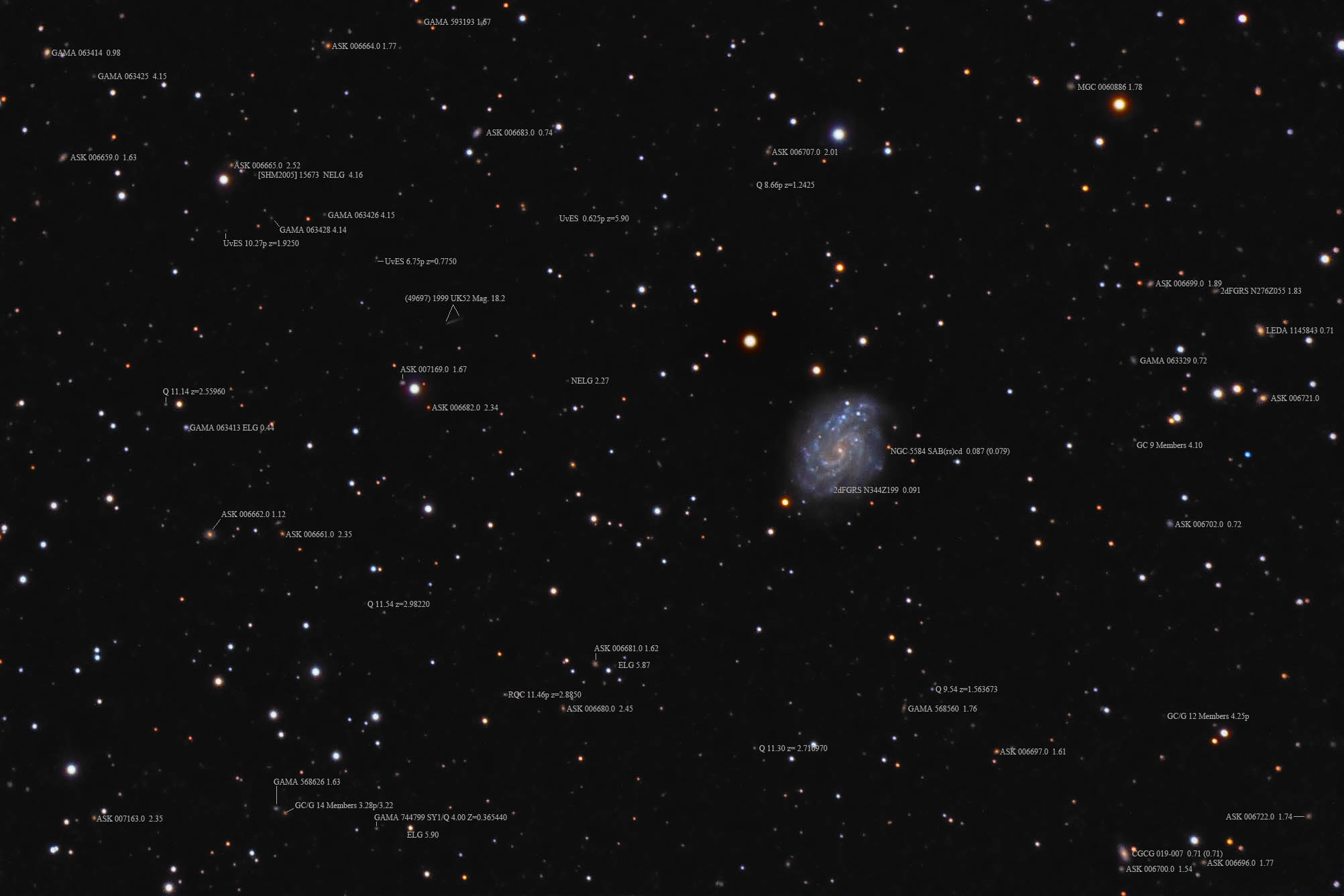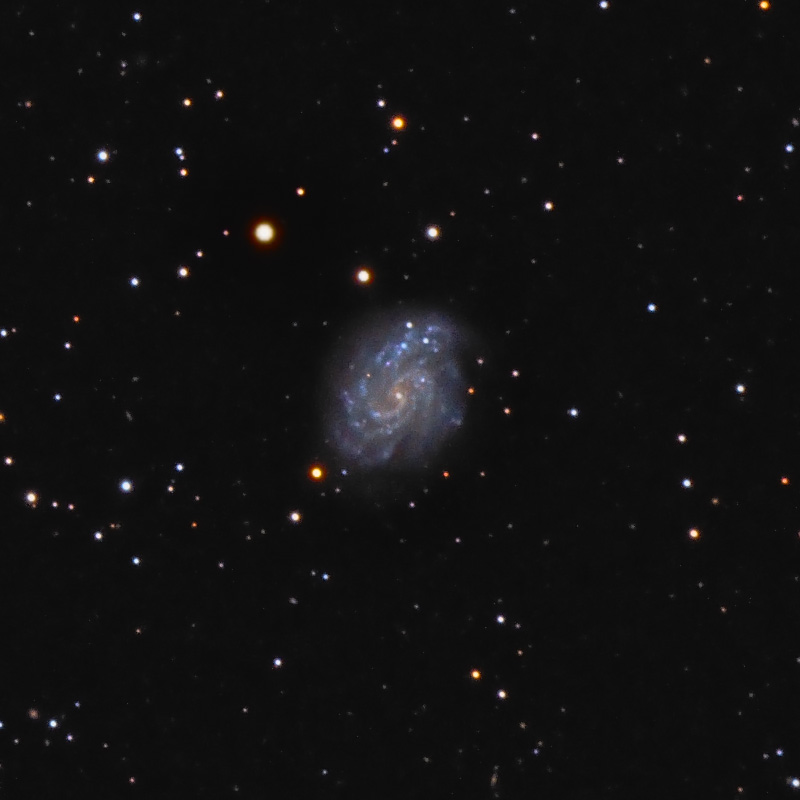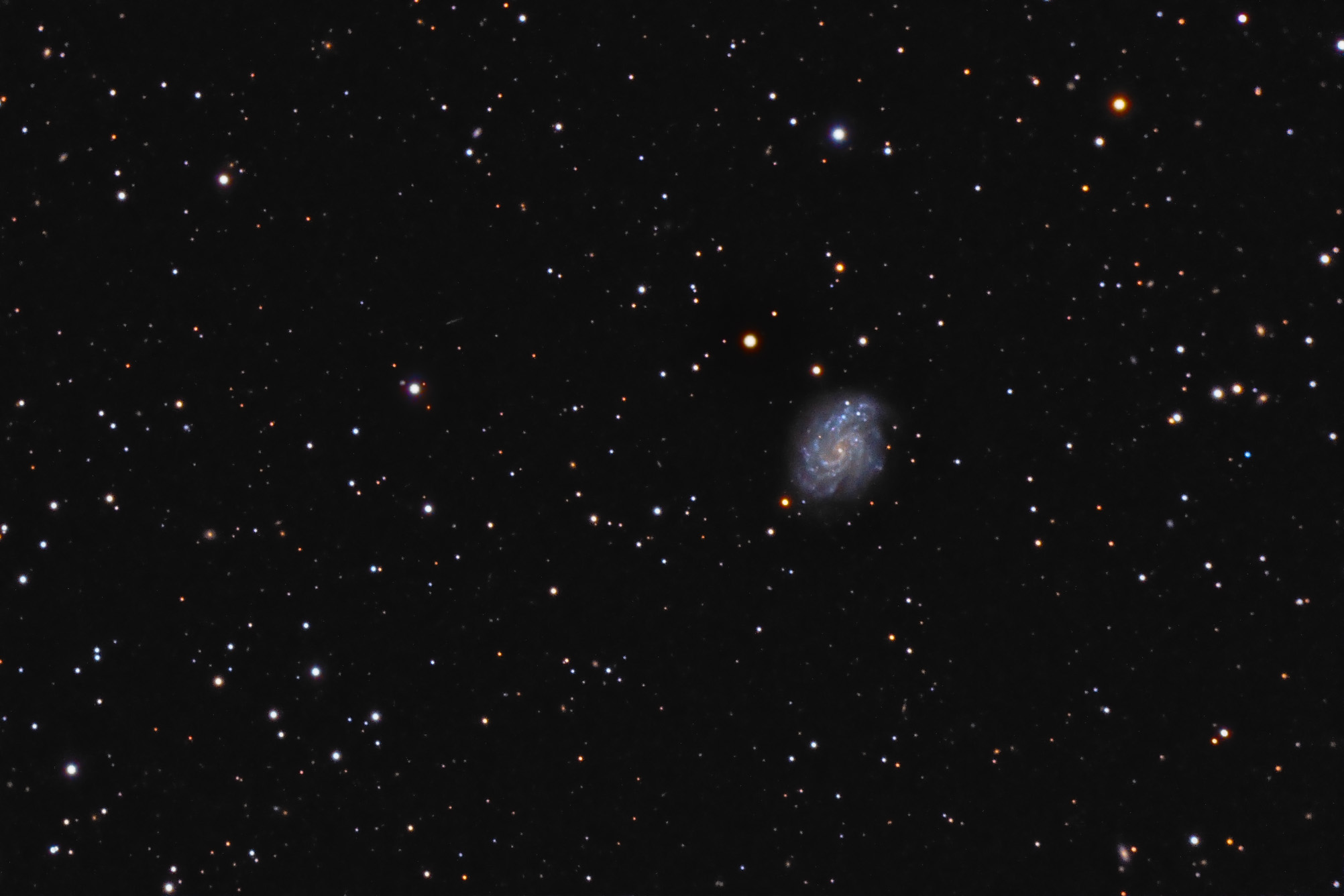| Description | Images |
Object name: NGC5584Designation(s): NGC5584, NGC 5584 is a rather low surface brightness galaxy in western Virgo 80 to 90 million light-years distant that is just about on the celestial equator. It is another spiral that at first appears rather normal then on second look is rather strange. The northern third is mostly a flocculent spiral in that the arm structure is just a bunch of bright knots in no real pattern. The lower two-thirds has spiral arms but they are strange. The northern arm coming from the core is indistinct and rapidly widens into just a bright region that has little structure. The southern arm is normal looking but then curves north becoming the disorganized jumble that is the northern part of the galaxy. A second southern arm stars from between the two arms and other arms begin and end apparently at random locations. One object I took to be a star knot near the southernmost end of the galaxy is listed in NED as a separate galaxy but with a redshift very similar to NGC 5584. I can't see it as anything but a star knot in the galaxy but it is shown on the annotated image. It was discovered by William Temple but the date is lost to history. It was also seen by Edward Barnard on July 27, 1881. Related Designation(s):2MASS J14222379-0023152, 2MASX J14222381-0023148, 2MIG 1973, APMUKS(BJ) B141951.08-000939.4, ASK 006705.0, CGCG 019-008, CGCG 1419.8-0009, GAMA 063349, GAMA J142223.76-002315.6, GSC 4977 00156, H-ATLAS J142223.4-002313, HAPLESS 14, HIPASS J1422-00, HIPEQ J1422-00, HIR J1422-0022, IRAS 14198-0009, IRAS F14198-0009, KIG 0626, KIG 0626:[VOV2007] 322, LDCE 1076 NED011, MCG +00-37-001, NGC 5584, NGC5584, NSA 164896, PGC 051344, PLCKERC545 G345.12+54.85, PLCKERC857 G345.11+54.84, SDSS J142223.59-002318.2, SDSS J142223.76-002315.5, SDSS J142223.76-002315.6, SDSS J142223.76-002315.7, SDSS J142223.77-002315.6, SSTSL2 J142223.77-002315.4, UGC 09201, UZC J142223.7-002310, WVFS J1422-0015, [FNO2007] 1771, |


